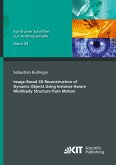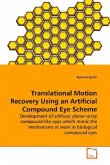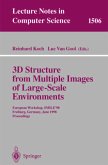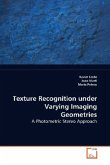Recovery of dense geometry and camera motion from a set of monocular images is a well-known problem that can be solved quite reliably in well-conditioned environments. Typical algorithms dealing with this problem assume static lighting and presence of sufficient scene texture. There are, however, many situations where these prerequisites are not met, and common algorithms fail. One example is medical video-endoscopy, where surfaces do not exhibit much texture, and lighting conditions change due to the moving light source that is mounted on the camera. We suggest to address the problem by applying a purely intensity-based approach that also takes into account changes in lighting conditions. In this thesis, we investigate the applicability of sliding window intensity-based bundle-adjustment methods to this problem.
Bitte wählen Sie Ihr Anliegen aus.
Rechnungen
Retourenschein anfordern
Bestellstatus
Storno








